Milkweed Ladies (6 page)
Authors: Louise McNeill

When the oak leaves were as big as a gray squirrel's ears, it was time to plant the corn. G.D. ran the furrows with the one-horse cultivator and let me ride old Bird. I rode on a sheepskin saddle, with my bare short legs sticking straight out over the horse's belly, and I called out in a big Cousin Rush-like voice, “Whoa,” and “Gee,” and “Haw.”
We all helped with the corn planting. Each of us had a little bucket of yellow corn grains to drop and cover up from the crows flapping up above. We would call out to mock them:
Â
Caw, caw said the crow,
Down to the cornfield we must go.
Picking up corn has been our trade
Even since Adam and Eve were made.
Â
We walked along the row measuring with our eyes and dropped four grains about every two feet. As we dropped the grains, we would say the old rhyme Mama had taught us: “One for the beetle, and one for the bee; one for the devil, and one for me.”
The vegetable garden down the lane was planted on the same square of ground for sixty years. The garden had its own essence, and though the vegetables grew and lived only in their one summer, certain parts of the garden remained fixed. These were the gray planks of the fence and the creaking
lopsided gate, and, in the very center of the garden square, an enormous old tame crab tree with masses of pink and white blossoms in the spring. The crab tree shaded the vegetables, and it was called Captain Jim's tree because he had planted it there long ago. Apple trees grew along one side of the garden, and all around the inside of the fence were scraggly bushes of currants, red raspberries, and gooseberries. In their places were, also, clumps of pieplant, the sage bush, the horseradish plants, and near the gate, one clump of the old-fashioned yellow jonquils we called “Easter lilies.”
On garden planting day there was a great bustle of buckets, hoes, rakes, seed packages, robins, fish worms, and sky and earth and sun. If you looked closely at the ground, you could see the tiny red spiders running around, the ones G.D. called “Burpee radish seeds.” But we ordered only a few of our seeds from Mr. Burpee. Mama and Granny traded seeds with neighbor women and always kept last year's seeds in a rusty tin box.
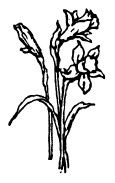
All of us workedâhoeing, planting, and lugging in buckets of manure. There were long, rectangular onion beds to raise up above the garden level, and big, flat hills for the cucumbers and the squash. Every seed had its own set kind of hill or row: the potato hills, tall and peaked; the lettuce beds,
narrow and long. There were rows of beans, peas, cabbage, roastin' ears, yellow turnips, and radishes. The garden was always done with the same ritual, for this small square of ground was our main food supply, the source of leather-britches beans, winter cabbage, and potential pumpkin pie.
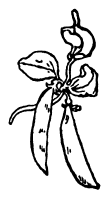
Later, we would go and watch G.D. plant his tobacco patch. He planted it far off in the wild, on some hillside on the edge of the woods. He burned a brush pile, mulched up the gray wood ashes, and planted the dark microscopic seeds. In fall he cut and cured it, stemmed it, and twisted it to shave off for his pipe bowl or for a hard, twisting chew.
When all danger of frost had passed, we set out the tomato plants Mama had grown in her hot bed. Down underneath the hot bed was the hot horse manure, and on top of the frame were two old cracked window sashes. The hot bed was Mama's special care, and she would grow three or four dozen tomato plants. Until Mama had come to the farm to live, Granny Fanny had never planted tomatoes. She thought they were “pizen” and called them “love apples.” But Mama had brought a new way, and even Granny came to eat tomatoes, and Mama would can as many as a hundred quarts for winter use.
We kids went off to the far pasture and broke off big branches of leafy buckeye brush to stick at each tomato hill to shade the young plants. Later, Mama used pieces of brush to “spray” her tomato patch. When G.D. got the money, he ordered a brass sprayer from Sears Roebuck and sprayed for Mama in the evenings. But the garden was still full of pests, and we children were set to picking bugs. We picked red-spotted potato bugs, and yellow-and-black-striped and yellow-spotted cucumber bugs, and the squashy green cabbage worms. I was afraid of the cabbage worms, for they had two eyes and, if squashed carelessly, they would spray their yellow guts right in my face.
May 30th was always Decoration Day. We call it Memorial Day now and carry plastic flowers to our grave sites and have parades and car-wreck killings over the long weekend. But back then, it was a day only to show respect to the dead ones of the family, for the dead ones knew and waited for their flowers. If their living kin should fail to bring the flowers, then the dead would know this cold desertion, and the neighbors tell the disgrace.
On the evening before, after the sun had gone down, we went out into the fields and woods to gather our armloads of bloom.
There were always the white thorn branches and the dogwood, cross-patterned for Jesus, and there were pink and orange honeysuckles (azaleas), wild crab blossoms, and branches of green laurel. All of these were carried home and set in buckets of water down in the springhouse. In the early morning, we would all go to the Graveyard Hill, carrying our flowers, some old fruit jars, several buckets of water, and a sickle to mow off the weeds. As we came to the graveyard gate, we would feel that strange, empty-breasted peace that lies over the loved dead. There were Captain Jim, and Captain Jim's and Granny's dead baby called “Infant Son of” and our own little brother who had never had a name.
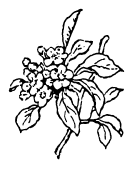
We would set our loads down gentlyâbeing careful never to step on a graveâand would sickle or pull up the worst of the weeds. We filled the old fruit jars with water and set a bouquet of flowers at each headstone and each foot, covering the rest of the grave with flower branches that would shrivel before noontime, but that, at first, lay fresh and cool. We laid our branches down quietly, as though the ones below could almost feel them and be remembered and remember us up above.
When our own row was finished, we would take the rest of the flowers to the old
row of mossy stones where great, great, great Cousin Jacob was lyingâthe boy who first had been buried hereâand we would lay branches on his grave and on the other old graves in the row. Then we would take a branch to each of our newer dead, the aunts and uncles and cousins, and one bunch each to the few neglected strangers who had come, by some chance, to sleep with our kinfolk on the hill.
Soon our living aunts and uncles and cousins would come, gathering in from their cricks and hollows, and by ten o'clock there would be a big reunion in the graveyard, with the men sickling off the weeds, filling in the sunken graves, and talking about crops and weather and what the dead had once said and done. We children would go with our cousins from grave to grave andâbeing careful never to step on a graveâwould read the headstones. Once, when I got to looking absently at Cousin Goldie's forget-me-not hat band, my sister pulled me back and cried, “You've stepped on Little Uncle John!” My foot burned with the sin of it and tears started up in my eyes. But mostly, we would go carefully and earnestly and stand in silence before each headstone, reading the name and dates and whatever else was there: “Beloved wife of,” or “He fought the fight, the victory won,” or “Asleep
in Jesus.” On some of the stones were carved pictures of doves and clasped hands and starry shapes. The one I liked best was the lamb carved on top of Cousin Ellis's grave. Cousin Ellis had died of the flu in 1918, and Aunt Nan had had his stone put up with a little lamb lying on the top.
Since before we were big enough to walk, we had been coming to all the funerals. We knew all the crying and the thin, dead faces in the coffins, and the straps being lowered down, and the rattling of rocks and dirt. And we knew, in the wind of the hilltop, the quavering notes of “Abide with me, fast falls the eventide,” and “Asleep in Jesus, blessed sleep.” We had heard the preacher reading out the words about grass that is cut down and withereth, about the valley and the shadow of death, and the Lord giveth and the Lord taketh away, blessed be the name of the Lord.
As evening came on us from the northwest under the pinnacle rocks, we would gather up our empty water buckets and close the gate behind us. Those evenings, a gray quiet would fall on the Swago Farm for the dead who had once walked the path we walked ourselves back across the meadows. Sometimes, as I grew older, it seemed to me that I could feel their empty tracks beneath my own.
A
fter corn planting was over, summer ran
hot and fast toward fall. It glimmered in heat waves over the hay stubble and whirred like the jarflies in the tallest trees. The cornfield had to be cultivated twice every season before it could be “laid by,” and that was, to me, a hateful task. There were always eight or ten acres of corn rows, thousands of hills, all grown thick with bindweed, ragweed, and smartweed. Every stubborn weed had to be dug out, shaken off, and thrown into the open furrow. But after five rows, we could rest for a few minutes under the apple trees, eating green apples and playing green music on the grass blades we held between our thumbs. As we blew on the grass blades, they whickered in the summer stillness, and the striped chipmunks chattered along the rail fence.
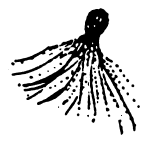
After corn hoeing came haying time, with horses to ride and great frothy buckets of Mama's ginger beer. There was always a
big crew of men, our uncles and cousins who traded work with G.D.; and there was the clattering music of the mowing machine, the buggy rake humping its rusty teeth across the field, and the fat shocks hauled in by the plow horses to the stacking Poles and the mow.
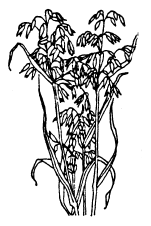
When the oats and wheat ripened, the cradlers would come with their red cradles and the song of the whetstones began in the early light. Then came the dry song of the swishing grain, the harsh stubble crunching underfoot, and the men racing each other as they cradled the grain into windrows and bound the hot, golden sheaves.
One hot August morning, Snowd Kellison would bring his threshing machine. Its four horses and big red contraptions would come wallowing across our field road, and then the roaring, spewing, and pouring would begin. The men hauled in the wheat sheaves, feeding the great thresher's mouth; the chaff blew out of the chaff-blower, and the wheat grains poured down into the sacks. The men sacked the wheat, hauled it to the granary bin, and poured it into the bin like a golden sea.
At noon, twelve or fifteen men came to the back porch to wash, snorting into the pans of cold water and drying themselves on the roller towels. In the dining room,
the women and girls dished up steaming bowls of food. The men would take great helpings on their plates, fork into the meat dishes with their eating forks, and laugh and drink buttermilk, wiping their mustaches on the backs of their hands. There would have to be three or four shifts at Captain Jim's long table, the women and children always eating last. On the table would be three kinds of bread, three kinds of meat, and big steaming bowls of potatoes, beans, and corn roastin' ears. For “side dishes,” we had jams, jellies,
schmierkase
, pickles, coleslaw, and sliced tomatoes; and, for dessert, cake and peaches, “floating island,” and blackberry pie with clotted cream.
I always ate in a hurry so I could go out on the porch and listen to the men talk as they smoked, chewed, and spit off the porch edge. Always during these hours, they talked of the place called Over the Mountain, where they hunted, fished, and gathered ginseng. I could see it all rising up before me as they talked, the hunter men walking through the trees. Then G.D. would knock his pipe out, and they would all go back to the field.
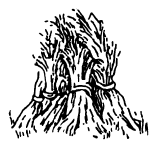
In August too was blackberry picking up on the pasture hill. We all dressed in men's overalls, cut off the toes of long stockings,
and drew the stockings over our hands and arms to fend off the cat-claw briers. We would hitch a lard pail around our waists with a discarded belt so we could pick berries with both hands. The briers were fierce; the spider webs clung to our faces in a particularly lecherous fashion, and the towhees fussed and quarreled at us from the thickets for stealing their berry crop. At noon we went to the cow spring to sit on a limestone boulder and eat our lunch of homemade bread-and-butter sandwiches and long strips of cucumber dipped into little paper packages of salt, and we made drinking cups from the silvery green leaves of the tulip tree. By late evening, we could count up that we had made maybe three dollars of our own money for a ticket to the fair and new clothes for school.
Some cold Saturday, we would harvest our winter apples and haul them to the cellar bins. We had “seek-no-farther” apples, “smoke house,” “fallow waters,” “winesaps,” and sometimes a sack of hard, green winter pears. The cellar was full of leaf and apple fragrance, and the leaves rustled as we covered up the bins. Sometimes we would bury a hole or two of apples along with the potatoes, yellow turnips, and cabbages under dirt and leaf mounds along the kitchen yard.
We always had the big Apple Butter Stirrin'
out at the washplace behind the house. For two days before, all the girls and women of the household, with perhaps a neighbor or two added, would gather on the back porch to peel and core the necessary five bushels of cut apples. The peeled apples were then packed into great crocks in the milkhouse to await Apple Butter Makin' Day.
In the dawn of that hot and spicy-smelling day, the twenty-gallon copper kettle was dragged out of the smokehouse and scrubbed with vinegar and salt. The rinsed copper insides shone pink and gold as we set the kettle up in its iron frame, kindled the fire, and carefully put three copper pennies down on the bottom of the pot. The apple crocks were carried out, and the first batch poured into the kettle with enough water to start the boil. Because apple butter, even with three pennies added, will scorch on the bottom, the stirring, with a long-handled, wooden, hoelike contraption, had to begin immediately. The women and big girls took turns at the hot and arm-aching job.
All day, among the smell of apples and wood smoke, the stirring would go on, as the apple butter thickened and “plopped” and turned a deep, rusty red. Along in the evening, the sugar, cloves, and cinnamon were poured into the boiling pot, and then
all the fragrance of the East filled our shabby dooryard, and the children could have a spooned-out sample to taste.
Granny Fanny and Mama would taste and confer seriously, and in the dusk, as the fire died low, one of the men would stroll down to the makin' place and help lift the heavy, hot kettle off the fire. The simmering apple butter was dipped out with a long dipper and poured into the waiting crocks or scalded “air-tight” jars to be stored in the cellar, and darkness would come over the dooryard and the dying fire.
In the late fall came corn-cutting and corn-husking, with fodder shocks and mounds of yellow corn ears lying in the fields. G.D.'s and Uncle Dock's hands would be bleeding and raw from the harsh corn blades, but the golden corn would become hot corn pone and hominy, mush, chicken feed, hog fattener, and always a little left over for the cows. We even used corn grains for checkers, for we could always find a few red ears for our red and gold checker “men.”
All fall the men were busy cutting and hauling in the winter's wood, bringing the sheep and cattle in from the hills, doing the fall plow work, and selling the lambs and calves. They hunted squirrel and pheasant up in the woodland, and there would be
fried squirrel on the table for breakfast or an occasional grouse or a few quail. In the prosperous years, there would be Mama's prized flock of turkeys to butcher, scald, pick, and pack down in barrels to send off to the Thanksgiving market in exchange for the one big stock of cash money Mama could earn during the year.
At the very end of the fall, often on Thanksgiving Day itself, came the hog butchering, with its shooting, squealing, scalding, and scraping, and with its great piles of steaming hog guts, pink mounds of sausage, grinning hogs' heads, and pans of fresh spareribs and backbone. On butchering day, we children would always retrieve, clean and dry the hog bladders, and blow them up like blood-veined balloons. We called them “footballs” and took them to school to play with. All the kids in school had their own new hog bladder footballs, and we played games of English soccer on the stony, barren school ground.
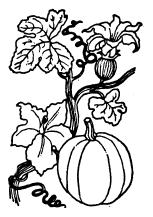
In winter I sometimes went out early and walked the fields of our farm alone. I liked to go on mornings of fresh snowfall, when all the meadows were trackless and hushed with white. I would walk up through Captain Jim's old orchard and when I got near the moss-gray trees along the rail fence, I
would begin to see the little animal tracks and would follow them up and down along the edge of the woods.
There were the triangular prints of the rabbits, or the little field mice tracks like delicate lace woven across the snow. Sometimes there might be fox tracks, one track in front of the other in a straight line. After a warm night, there might be skunk tracks, like little human footprints but with a soft white dab where the tail had brushed the snow; and up in the bushes the bird tracks made dark little stitches mending the hill. There were also the round cat tracks, no claws showing, the soft, retracted feline tread; and one morning I saw blood on the snow.
Sometimes I could feel the others close around me, down in their little burrows in the earth: the gray, sleeping wood mice; the little striped ground squirrels; and the soft curled-up rabbits, the snoring old groundhogs, and the ring-tailed raccoons. Then the silence would come down, as though it fell on our meadows from the high whiteness of Pinnacle Rock.
